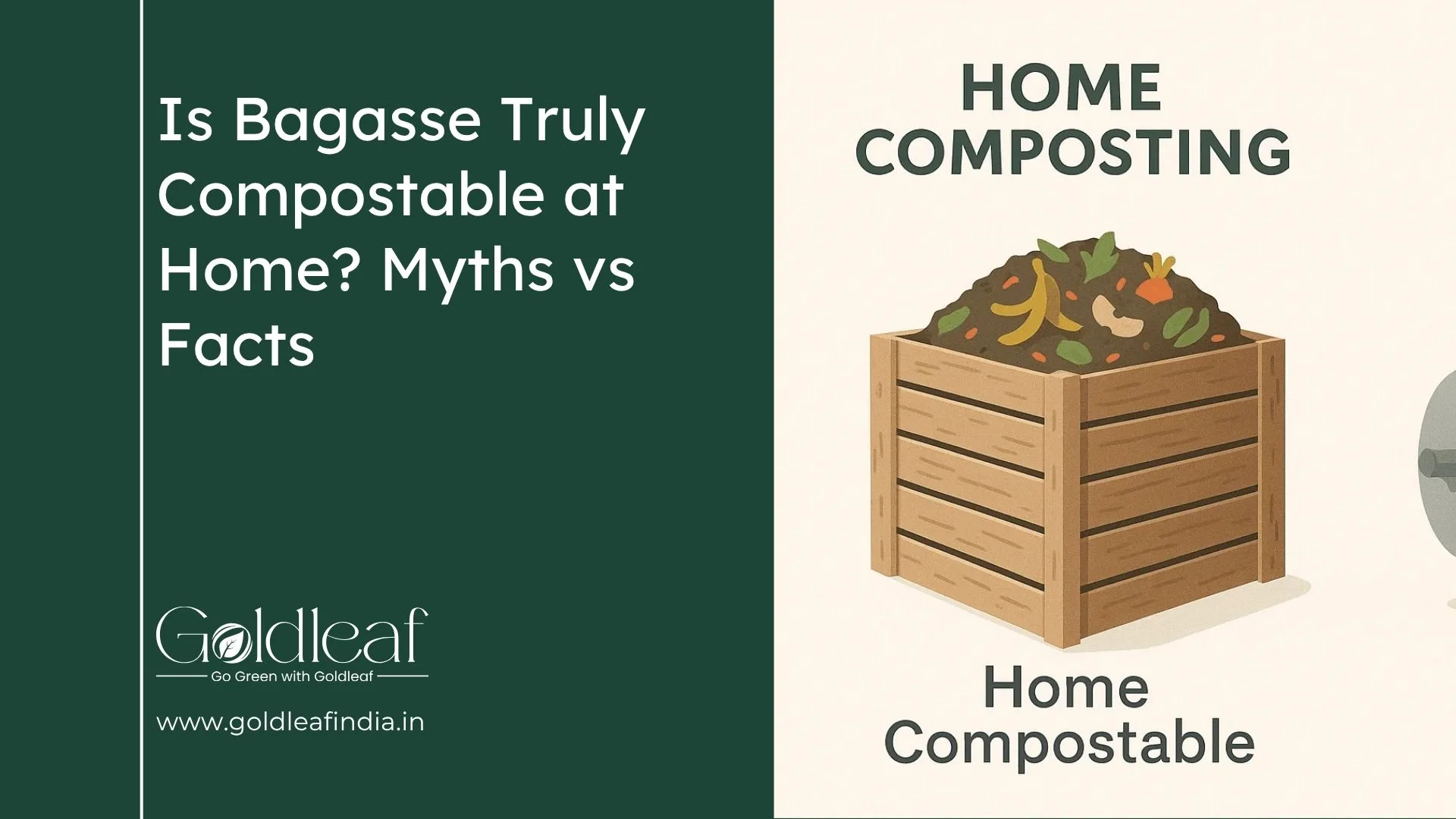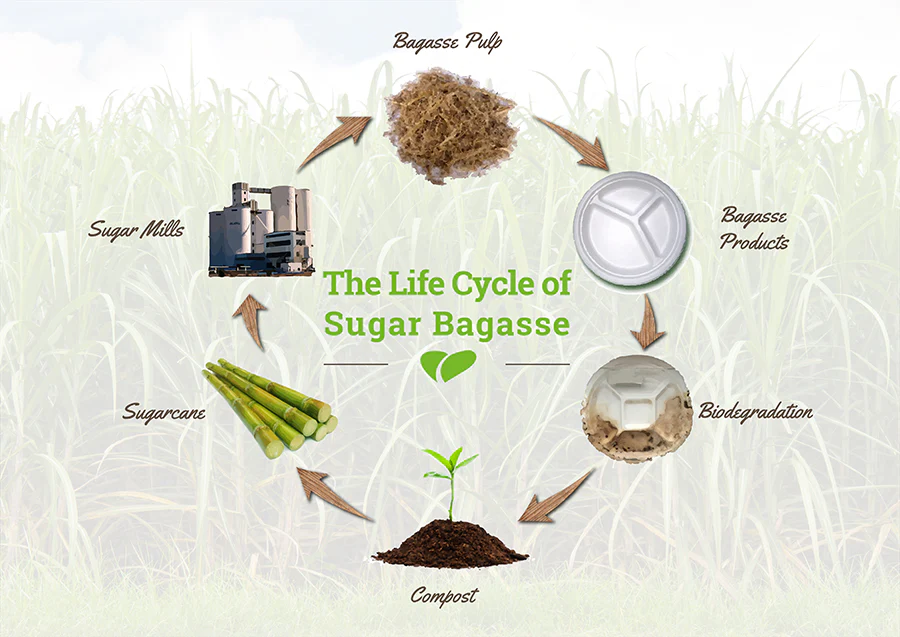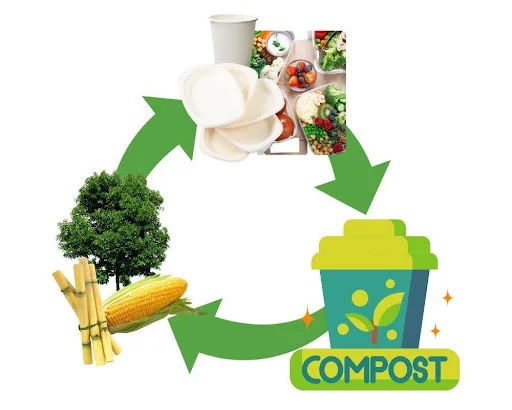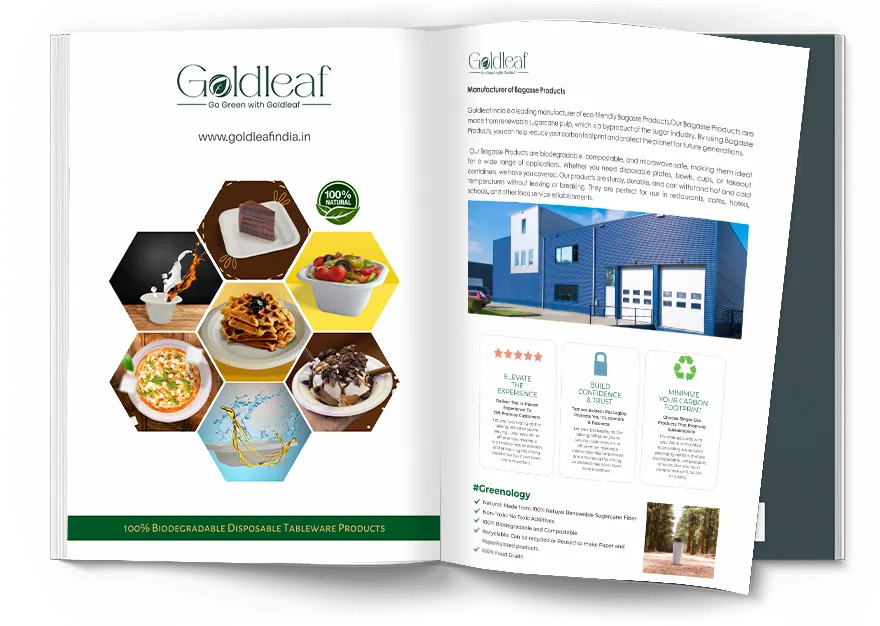Connect With Our Team

- 1196
Introduction
The eco-friendly products industry is booming, and the new kid on the block includes sugarcane fiber producing bagasse tableware that is gaining popularity as an eco-friendly, sustainable option to plastic and styrofoam disposables. The manufacturers of these products say that these products are compostable tableware, but many ask themselves: Is bagasse really compostable in the home, or is this just brilliant greenwashing? This essay is an in-depth analysis of facts vs myths to explain about bagasse composability in order to make sound and environmentally favourable decisions.
What is Bagasse?

Bagasse tableware is made from the coarse, vegetable biomass that is left over after the processing of sugarcane juice. Instead of being dumped or burnt (which causes pollution), this by-product is fashioned into throwaway plates, bowls, clamshell containers, and cups. It is made of renewable fruit sources and does not have any poisonous toxins; hence, bagasse tableware is regarded as a great substitute for petroleum-based plastic, and it is becoming more common in picnics, catering, or food service worldwide. It is also sturdy, resistant to moisture, and applicable to hot and cold foods because of its natural fibers. Due to these properties, bagasse disposable plates are now considered excellent alternatives to traditional disposables.
Myth 1: Bagasse Needs Industrial Composting to Break Down
Fact:
People often think that bagasse tableware has to be composted in an industrial environment. Although the decay process is speeded up by industrial composting (within 60-90 days, bagasse can be decomposed via high temperatures and well-controlled conditions), uncoated bagasse sugarcane plates may decompose at home under similar conditions. The length of time is, however, longer, 90 to 180 days, usually depending on the local weather, compost bin activity, and the composition of the pile.
As an improvement measure at home, bagasse disposable plates should be torn or shredded into smaller pieces to enhance decomposition by maximizing surface area. Combinations of these materials with nitrogen-flushed green material, such as vegetable scraps, would keep the microbial population high, and successful breaking down would occur even in a basic backyard compost system.
Myth 2: Bagasse Plates Have Plastic Coatings That Prevent Composting
Fact:
Bagasse tableware made out of some materials, such as those intended to have a long shelf life or high acid endurance, may feature a thin film made out of a plastic (PE) or bioplastic (PLA). Such coatings do not allow full breakdown in a home compost heap because temperatures are too low to break down such materials, which are synthetic.
Some compostable plates and cutlery products, however, are not coated. Such brands as Goldleaf produce 100% uncoated, natural bagasse tableware, which is genuinely home compostable. To determine that a bagasse tableware product is suitable for backyard compost, check “OK Compost HOME” or TUV Austria certification when purchasing the product. Although coated products can be put in the compost after industrial treatment, the object can usually take much more time in the domestic environment and is not recommended for households aiming to live zero-waste.
Myth 3: Bagasse Doesn’t Break Down in Cold Weather
Fact:
Most people have this notion that bagasse tableware cannot decompose in cold climates or during winter. The reality is that bagasse sugarcane plates do decompose in cold weather, but considerably at a lower pace. In low temperatures, microbial activity necessary in composting is reduced, thus the process has to takes a longer time than normal.
To aid winter composting, homeowners can use insulated bins or indoor composters, or stockpile compostable tableware and other materials until spring. Otherwise, by combining bagasse tableware with kitchen scraps and frequently tossing the heap, it is possible to ensure that the resulting internal heat does not vanish regardless of how cold it is outside; this would supply a continuous activity of microbes.
Myth 4: Bagasse Releases Harmful Toxins When Breaking Down
Fact:
More and more, bagasse tableware is produced out of natural plant fibers and is completely free of petroleum-based additives or synthetic chemicals, as long as it is uncoated and certified compostable. Being biodegradable bagasse tableware releases organic matter, enhancing the soil, even though it does not leach toxins, microplastics, and heavy metals like most conventional plastic products.
Composting bagasse disposable plates at home will not only help make your soil healthy but also eliminate waste in the landfills and avoid environmental hazards that come with plastic pollution. Certified bagasse sugarcane plates deposit no harm to the soil, except humus that is rich in nutrients and ameliorates the growth of plants and their vitality.
How to Compost Bagasse at Home (Proper Method)
While bagasse tableware can decompose naturally, following a few simple steps will greatly improve its composting efficiency at home:

• Tear or shred the Bagasse: Smaller pieces expose more surface area to microbes, accelerating decomposition.
• Mix with ‘Greens’ and ‘Browns’: Combine bagasse tableware (brown) with moist, nitrogen-rich food scraps (green) like fruit peels or coffee grounds to balance the carbon-nitrogen ratio.
• Moisten the Pile: Ensure your compost pile feels like a damp sponge, neither dry nor soaking wet.
• Aerate Regularly: Turn the compost every 1-2 weeks to promote oxygen flow, essential for microbial health.
• Be Patient: Home composting takes time, expect full decomposition in 3 - 6 months, depending on pile activity and environmental factors.
Following these tips ensures that compostable plates and cutlery, like bagasse sugarcane plates, break down efficiently without contributing to landfill waste.
Certified Home Compostable Bagasse Products to Look For
To ensure your bagasse tableware disposables are genuinely home-compostable, look for trusted certifications and brands, such as:
• Goldleaf Bagasse Plates, Bowls & Clamshells (Uncoated, verified compostable)
• Products bearing TUV Austria’s "OK Compost HOME" label
• Items labeled “100% Plant Fiber, No Plastic Coating”
Get Best Quality Bagasse Products
These products decompose fully in a backyard compost bin without leaving harmful residues and are considered among the best compostable plates in the market.
Environmental Benefits of Composting Bagasse at Home
Composting bagasse tableware at home offers multiple benefits for both your household and the planet:
• Reduces landfill waste and carbon emissions
• Creates nutrient-rich compost for gardening
• Lowers reliance on industrial composting facilities
• Supports a zero-waste and plastic-free lifestyle
By closing the waste loop at home, you help build healthier soil while minimizing your environmental footprint with your compostable party plates or eco-friendly dinnerware disposable sets
Bagasse vs. Other Compostable Materials: A Quick Comparison
| Material | Home Compostable? | Breakdown Time | Ideal For |
| Bagasse | Yes (if uncoated) | 90–180 days | Plates, bowls, clamshells |
| PLA (bioplastic) | No (industrial only) | 180+ days | Cold cups, coated tableware |
| Paper | Yes | 60–90 days | Napkins, paper cups |
| Bamboo | Yes | 180+ days (slow) | Cutlery, straws |
Conclusion: Is Bagasse Truly Compostable at Home?
Yes, but with care. The truly home compostable bagasse tableware products without plastic/bioplastic coatings are the best compostable plates and zero-waste alternatives to conscious customers. Nevertheless, the ones with concealed layers cannot biodegrade completely even in non-industrial conditions, which is why the choice of products should be given particular importance. Where in doubt, use brands that are certified, such as Goldleaf, to make sure that your bagasse disposable plate products will safely go back to the earth, even in your backyard compost bin, while also being a thoughtful compostable party plates choice for gatherings.
- Products
- Bowl
- Clamshell
- Compartment Plate
- Plate
- Tea Cup
© 2024 , Goldleaf ,
All rights reserved.
Made & Managed by Lightlink Solutions




